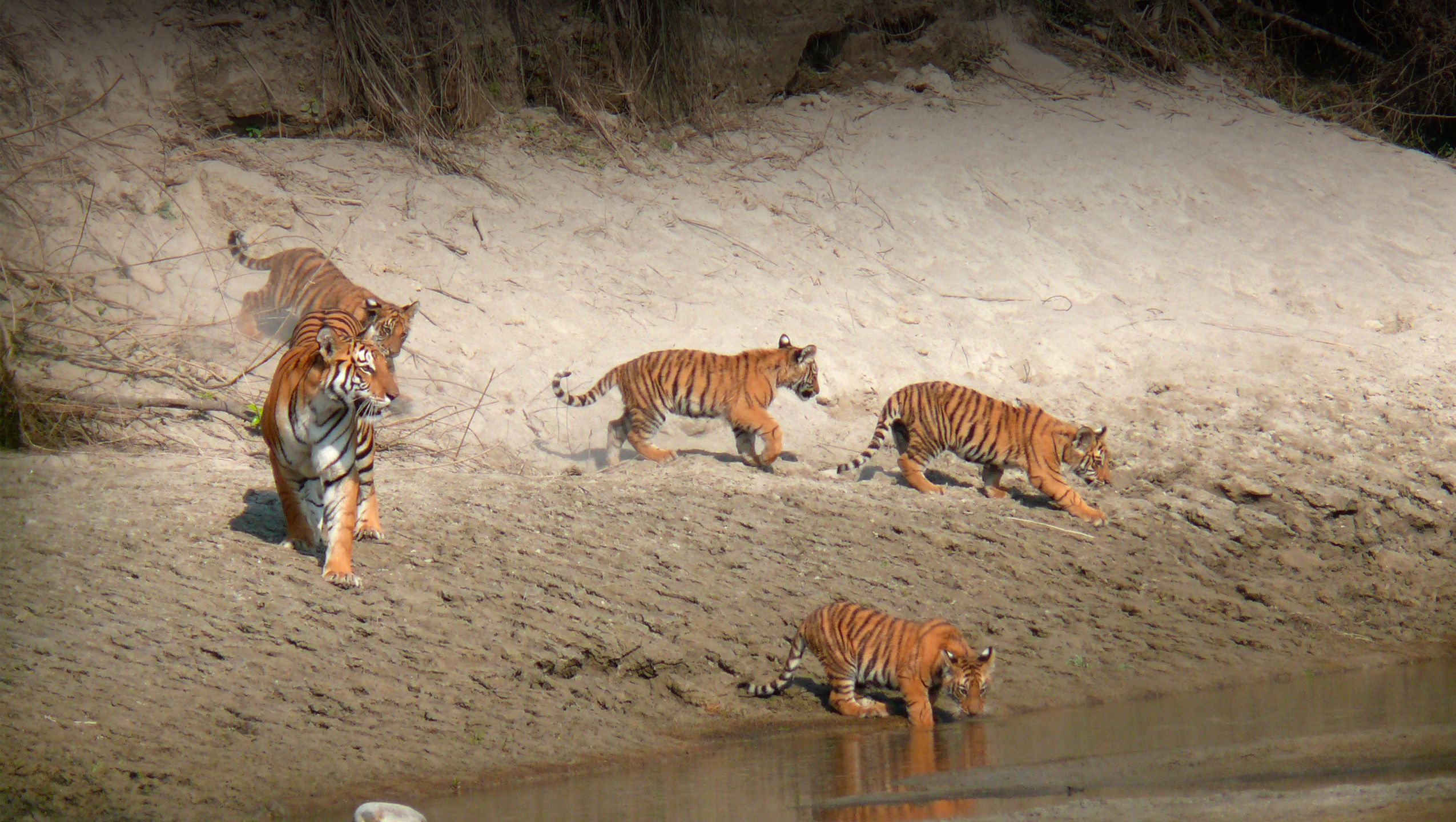The population of Bengal tigers at Shuklaphanta National Park has risen to 36, thanks to habitat improvements. Enhanced habitat conditions, an adequate prey base, and effective anti-poaching measures have contributed to this increase.
According to Manoj Aire, the information officer at the park, there are now 12 male tigers, 16 female tigers, and 8 cubs in the park. Out of these, 28 tigers have been spotted through camera trapping.
Before 2019, the park had only 17 Bengal tigers. Since then, the population has doubled, noted Aire. Shuklaphanta National Park, despite its small area, is known for having a high density of tigers.
“The core area of Shuklaphanta has the highest tiger density,” Aire said. “Additionally, areas around the Choudhar River and Shikari Lake serve as important tiger habitats.” He also mentioned that a tiger was recently spotted in the Chure area during monitoring.
To support the prey species of the Bengal tiger, grazing areas have been improved and artificial ponds have been constructed to ensure a continuous water supply within the park. The park is home to more than 55 natural water bodies.
“Shuklaphanta National Park is adjacent to India’s Dudhwa National Park. Tigers often cross the border, which can cause fluctuations in their numbers,” Aire explained. “They are known to move between Lagga Bagga National Park in India and Pilibhit.” The Bengal tiger is listed as a protected species under Schedule 10 of the National Parks and Wildlife Conservation Act.
Tiger conservation efforts at Shuklaphanta National Park began in 1974. The National Parks and Wildlife Conservation Act of 1973 stipulates a penalty of up to 15 years imprisonment and a fine of up to NPR 1 million for killing a tiger or being involved in poaching its parts.
Tiger census activities have been conducted since 1999, according to the park authorities. The park’s 305 square kilometers serve as the primary habitat for Bengal tigers.





